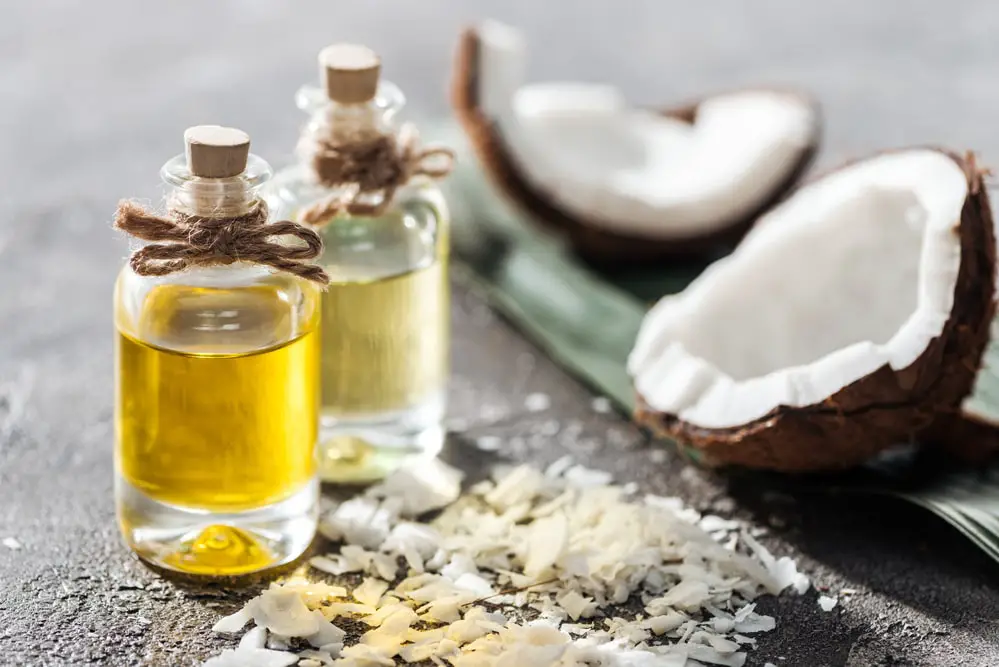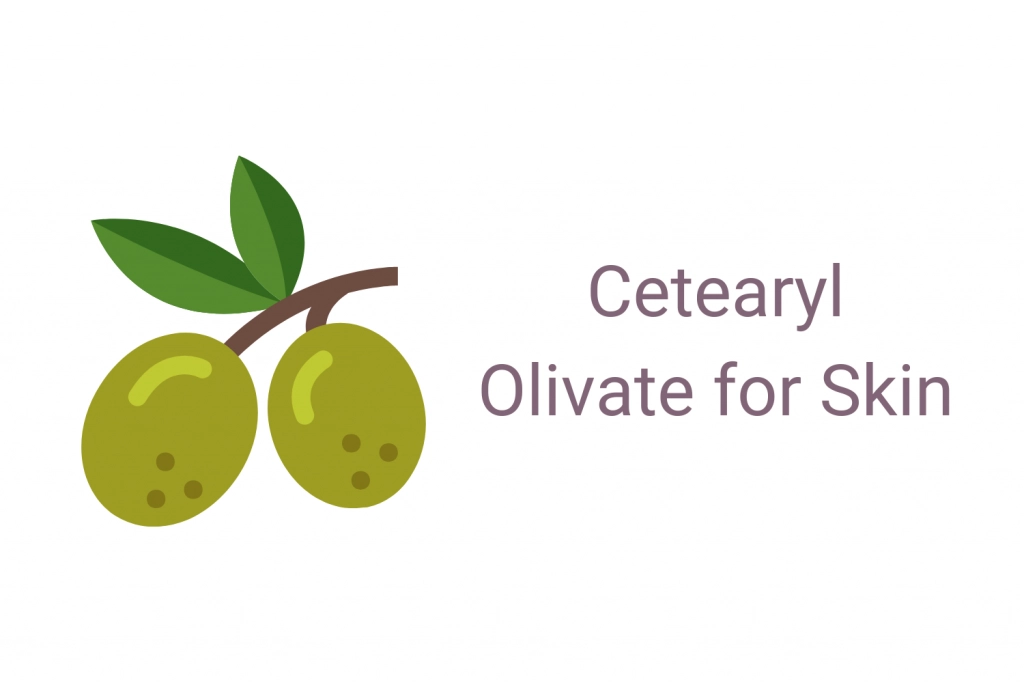Have you checked the ingredients in your skin care products lately? Chances are stearic acid is found in many of the products you’re using. Coconut oil is one of the main sources of stearic acid.
This post may contain affiliate links. Read the full disclosure here
While it’s a very common additive in skin care products, you might wonder what that means for your skin (if anything). Therefore, this guide provides an in-depth overview of stearic acid and its uses in skincare and cosmetics.
What Is Stearic Acid?
The name stearic acid might be a bit misleading if it puts you in mind of acids like hydrochloric acid, which are known to burn the skin. The truth is stearic acid is classified as a saturated, long-chain fatty acid that occurs naturally in human, animal, and plant fats. Fatty acids are the building blocks of fats and oils, and unlike tissue-dissolving acids, they generally have a gentle and hydrating effect on the skin.
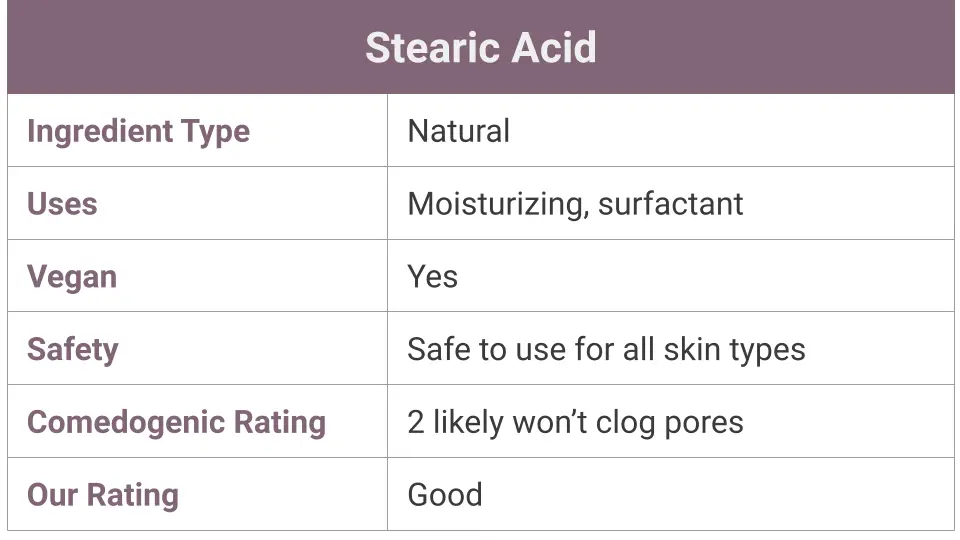
In chemistry terms, a stearic acid molecule is made up of a long chain of 18 carbon atoms. There are only single bonds between the carbon atoms and the chain contains the maximum number of hydrogen atoms attached to the carbon atoms, which is why stearic acid is described as saturated.
This saturation is also why stearic acid appears as a solid substance. In contrast, unsaturated fats have double bonds between some of the carbon atoms and are liquids at room temperature.
Stearic Acid Skin Benefits
Although stearic acid is usually a behinds-the-scene ingredient in most skin care products, there are several skin care benefits that are specific to its use. It moisturizes, acts as a surfactant, strengthens the skin barrier, and helps balance the skin.
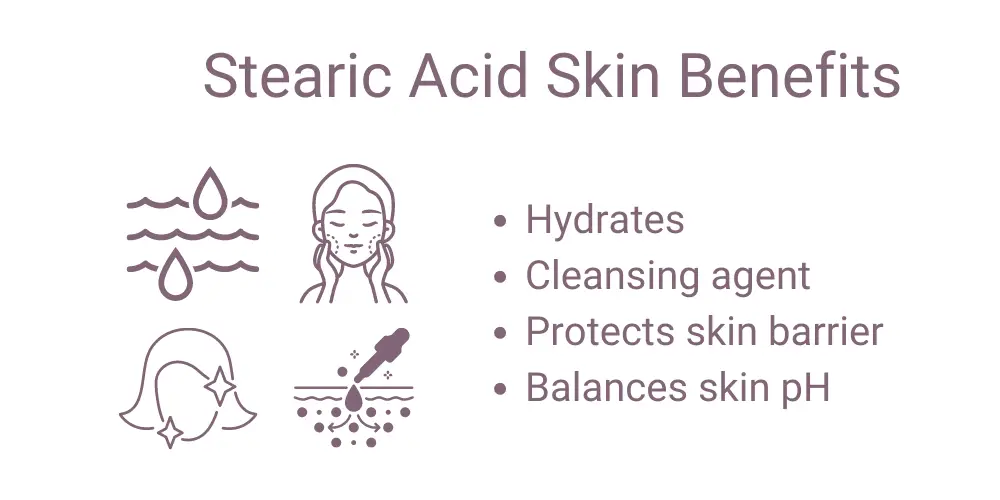
Has Moisturizing Properties
Stearic acid is an emollient or moisturizer that softens, smoothes, and lubricates the skin. That’s why it’s commonly used to add moisturizing properties to skin care products. For instance, it increases a product’s capacity to hold more water in proportion to oil.
You’re probably familiar with how oil and water repel each other. But stearic acid has the ability to help water, oil, and other ingredients in moisturizers blend properly. Also, since moisturizing products that contain stearic acid can hold more water, they have a less viscous texture, making them easier to apply to the skin.
The moisturizing oils are also quickly absorbed and bind to your skin, keeping it hydrated for longer, without affecting the natural production and balance of your skin oils.
It’s a Surfactant And Therefore A Cleanser
Surfactants or surface-active agents are one of the primary and active ingredients in cleaning detergents. As a surfactant, stearic acid makes it easier for water, oil, and dirt to bind together, so they can be easily removed. The reason why stearic acid is good for the skin in this regard is that it cleanses without stripping your skin of its natural oils and leaving it dry. So, for instance, you can use it to wash off make-up and it’s likely to leave your skin with a smooth and silky texture.
Strengthens the Skin’s Barrier
Since stearic acid is a moisturizer that prevents water loss it can help maintain and strengthen the skin’s protective barrier. Your skin produces natural oils that keep moisture locked in while insulating you from irritants, allergens, and bacteria. Stearic acid improves this function of the skin, unlike other harsh products which can damage or disrupt the skin barrier.
Helps Maintain Your Skin’s pH
As mentioned, stearic acid is not like other strong and corrosive acids, like hydrochloric acid, which has a pH of 0. When it comes to acids, the lower the pH, the stronger the acid. The good news is, stearic acid has a pH of between 5.5 and 6, meaning it’s closer to the pH of water, which sits at neutral seven. As a mild acid, stearic acid perfectly matches the skin’s ideal pH, which ranges from 4.7 to 5.75.
How Does Stearic Acid Compare to Other Fatty Acids?
In a study carried out to determine the safety of fatty acids, stearic acid was compared with other common fatty acids, which are oleic, palmitic, lauric, and myristic acid. These fatty acids were topically applied to the skin of mice, rabbits, and guinea pigs. Results from these experiments indicate that all these fatty acids have little to no toxicity when applied to the skin.
Additionally, the study used product formulations that contained oleic and stearic acid to prove they do not affect the skin’s sensitivity to UV radiation. Tests also concluded that these fatty acids do not cause eye irritation, are noncarcinogenic and are non-irritating at high concentrations. From this study, it can be safely concluded that stearic acid has similar properties to other fatty acids. This isn’t surprising, since these fatty acids all have structural similarities.
You’ll find that oleic, palmitic, lauric, and myristic acid are also associated with their own skin benefits. For instance, research shows that plant oils that contain monounsaturated oleic acid increase the skin’s permeability, and therefore the absorption of other beneficial ingredients in skin care products. There’s also a study that shows that palmitoleic acid, one of the most abundant fatty acids, can improve wound healing when applied topically. Last but not least, lauric acid has been shown to have antimicrobial properties, that support the function of the skin’s protective barrier.
Which Skin Care Products Contain Stearic Acid?
Stearic acid is commonly found in the following skin care products:
- Facial moisturizers
- Body lotion
- Body wash
- Shaving soap
- Moisturizing masks
- Skin cleansers
- Skin tonics
- Protective hand creams
- Plus more
As you can see, stearic acid regularly features as a skincare ingredient. It has an impressive range of functions and can act as a stabilizer, lubricant, emollient, emulsifier, thickener, softener, and skin cooling agent. Due to its somewhat waxy appearance, it can also impart a glossy finish to creams and lotions. Overall, skin care products that contain stearic acid tend to leave your skin with a velvety and smooth feeling.
Stearic Acid Comedogenic Rating
Unfortunately, stearic acid is considered comedogenic in some skin care circles, meaning that it can clog skin pores, which increases the chance of developing acne. Stearic acid has a comedogenic rating of 2, which translates to a moderately low chance of clogging skin pores. In contrast, substances that are non-comedogenic (will not clog pores) have a rating of 2, while those at the opposite end have a rating of 5.
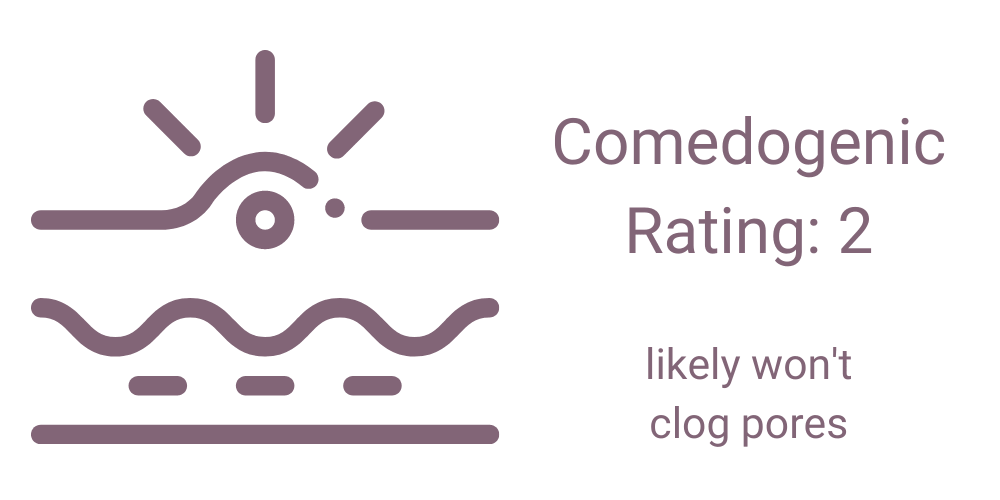
In some instances, stearic acid might be classified as non-comedogenic due to its fairly low rating. But, if you have sensitive skin or skin that’s prone to acne breakouts, you might want to do a patch test on your skin or consult with a dermatologist to confirm if products containing stearic acid are suitable as part of your skin care routine.
Is Stearic Acid Safe For the Skin?
The general consensus is that stearic acid is safe for the skin. As mentioned, in this study, stearic acid was found, along with other fatty acids like oleic and palmitic, to have little to no toxicity.
It’s also a non-irritant and the Cosmetics Database has labelled it as a safe and mild substance. Additionally, stearic acid is Generally Recognized As Safe by the FDA.
Frequently Asked Questions
Find answers to some of the most commonly asked questions about stearic acid.
Is Stearic Acid a Good Ingredient in Skincare Products?
Stearic acid can be a good ingredient in skincare products, depending on how you look at it. On the plus side, it is associated with many skin benefits. Another plus, is it blends well with almost any ingredient used in skin care products. Also, its popularity as a skin care ingredient means you don’t have to search far to access these benefits. There’s a study, which supports the role of stearic acid as a good ingredient in skincare products.
The study used a mild and moisturizing cleanser that contained stearic acid to see if the stearic acid was effectively delivered to the skin’s corneum. The results showed that delivery of the stearic acid was high, and the stearic acid was likely incorporated in the corneum lipid phase, strengthening its function. Keep in mind that, the stratum corneum is the skin’s outer layer that serves as a protective barrier, so in a nutshell, stearic acid can help boost your skin’s health.
On the other hand, stearic acid is considered a mildly comedogenic substance. Its presence in almost every skin care product might put you at risk of acne breakouts if you have acne-prone or sensitive skin.
Related Ingredients:

